Tuesday Triage #55
- TUESDAY TRIAGE #55 by Vadim Drobinin
- On sausages and truffles
- Things I enjoyed reading
- 1. Cocktail Culture Has a Nostalgia Problem by Scott Hocker
- 2. Hundreds of Ways to Get S#!+ Done—and We Still Don’t by @pomeranian99
- 3. Bursting the bubble: how gum lost its cool by Will Coldwell
- 4. How I store my files and why you should not rely on fancy tools for backup by unixsheikh
- 5. The weird world of Australian sea snakes by John Pickrell
- 6. Typos, tricks and misprints by @arikaokrent
- 7. From stolen laptop to inside the company network by @DolosGroup
- 8. Restaurant prices in the 19th century by janwhitaker
- 9. Why printers add secret tracking dots by Chris Baraniuk
- 10. Scanning your iPhone for Pegasus, NSO Group's malware by @arkadiyt
- Things I didn't know last Tuesday
- 1. Mappazzone
- 2. Nata de coco
- 3. Watling Street
- 4. Blue Lake in New Zealand
- 5. Primer
- 6. Orchestral soundtracks in 65 tube stations
- 7. Mozart statue in London
- 8. Eating Corpses as Medicine
- 9. Crinkle crankle wall
- 10. Pedestrianism
- Book of the week
- Thank you and see you in a week!
TUESDAY TRIAGE #55
by Vadim Drobinin ¶
Your weekly crème de la crème of the Internet is here!
03.08.2021 (read in browser)
On sausages and truffles ¶
Last week I mentioned Volkswagen making their own sausages, which was a direct result of my unexpected craving for some currywurst with potato salad.
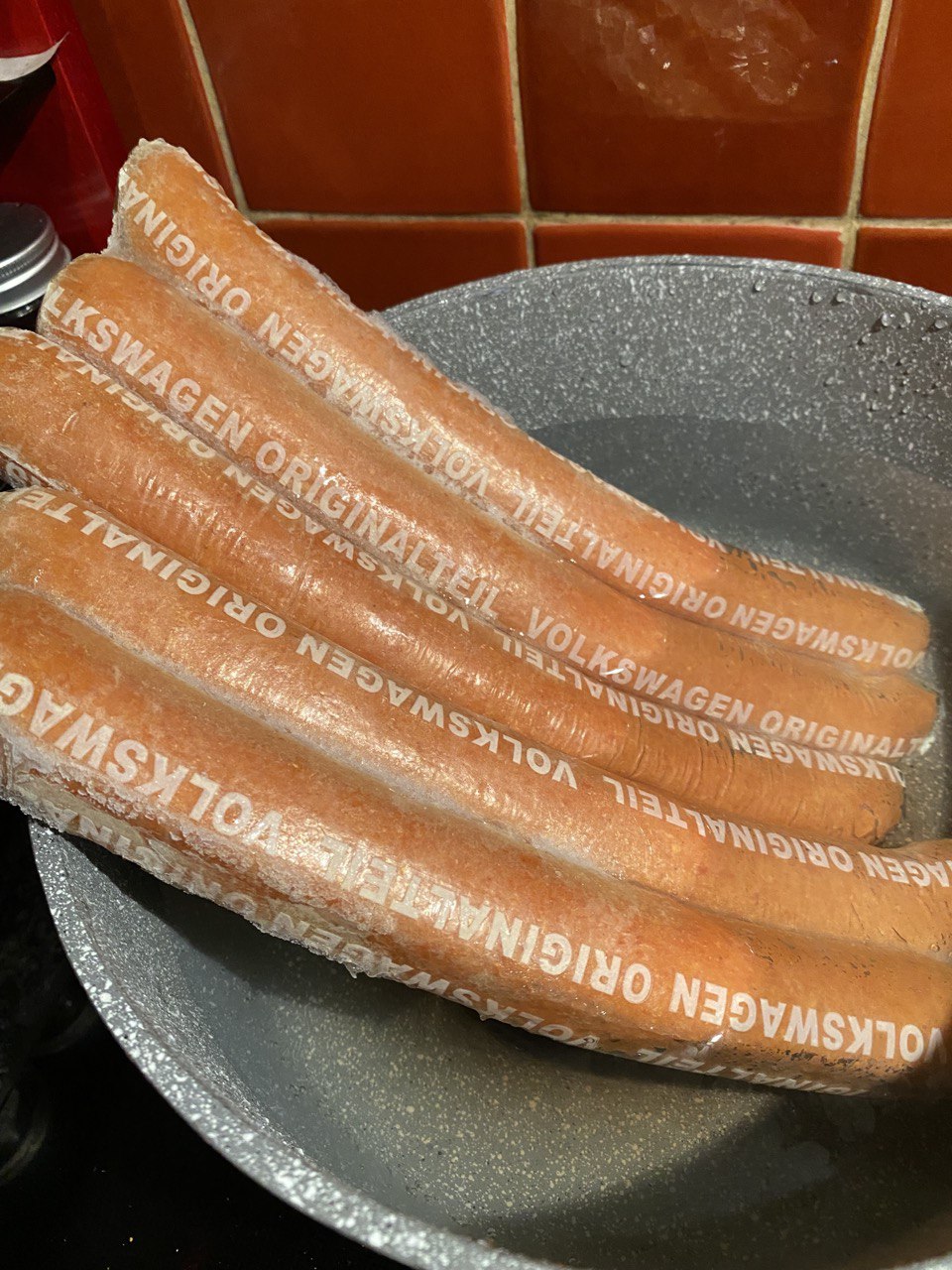
The thing is, I never had a potato salad before. And I had currywurst only once, in Berlin, quite some time ago. I came back knowing that I don't like neither Berlin nor curry with ketchup. And yet, seems like people change.
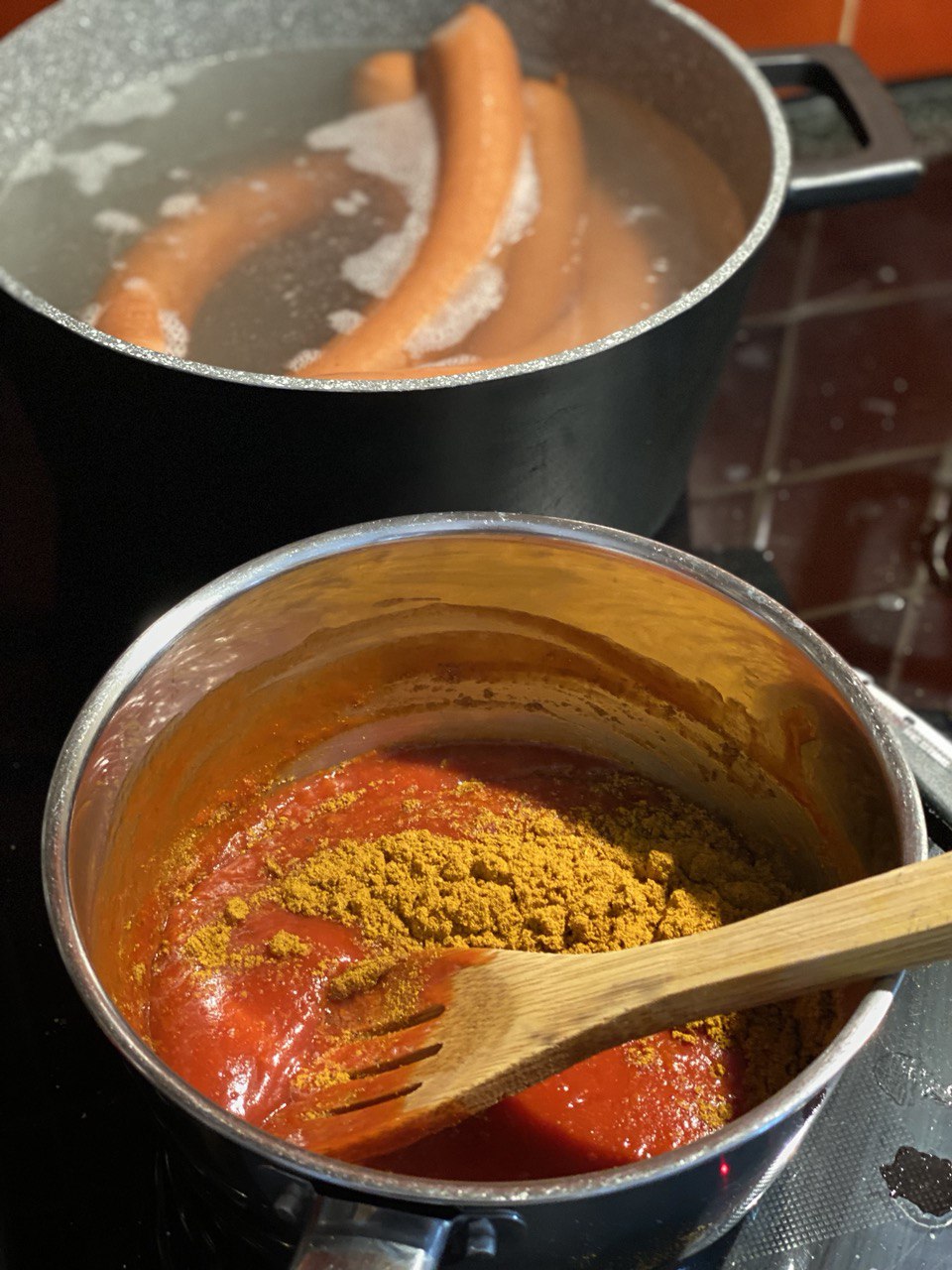
Homemade dish is obviously way better than the one you could get in a shady shop in the middle of the night, just saying.

Among some slightly fancier things, I was looking at the classic Arzak recipes for quite a while (this is a famous Basque restaurant), and one of their simplest recipes is truffles glazed with white clay.
The issue is, there is no specification of clay to use, so I went for the most well-reviewed "edible white clay" from Amazon. It came in rectangular blocks and didn't really dissolve in cold water, so I had to blend it in a commercial-grade blender to turn into a smooth substance, and then try to dry the coating on truffles with a fan on cold air mode.
It didn't work, so I had to go back to Amazon, and start reading reviews.
I learnt a lot that day: including a wast selection of clays, clay powders, slates, and chalks, all of which are edible and have different flavours.
My second attempts was more successful: the clay was dissolving in cold roiboos infusion straightaway, and even drying out to some extent.
So I finally managed to make these garam masala chocolate truffles (chocolate is actually made from scratch too):
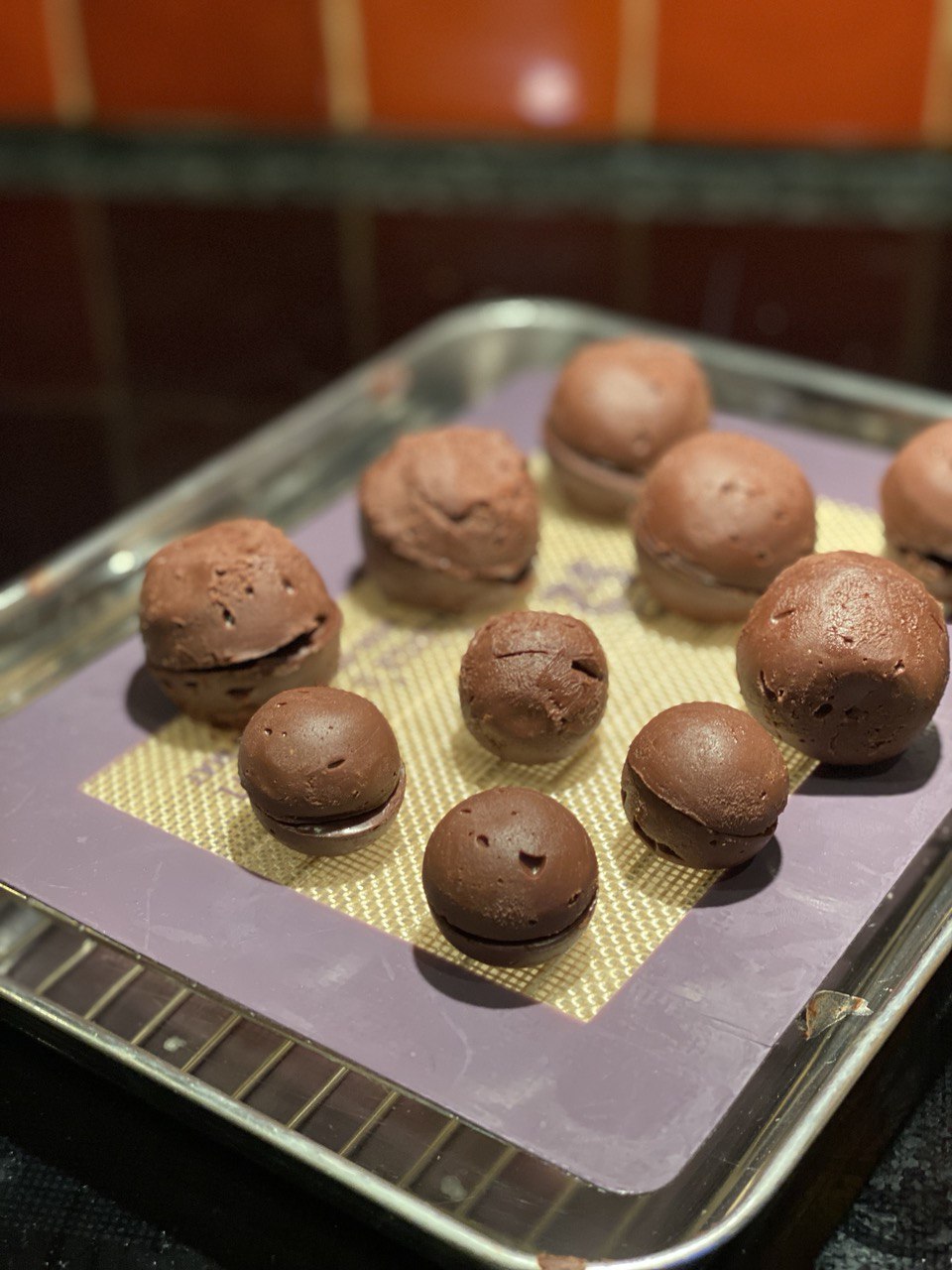
And then coat them with white clay and roiboos infusion, and dry out with a fan.
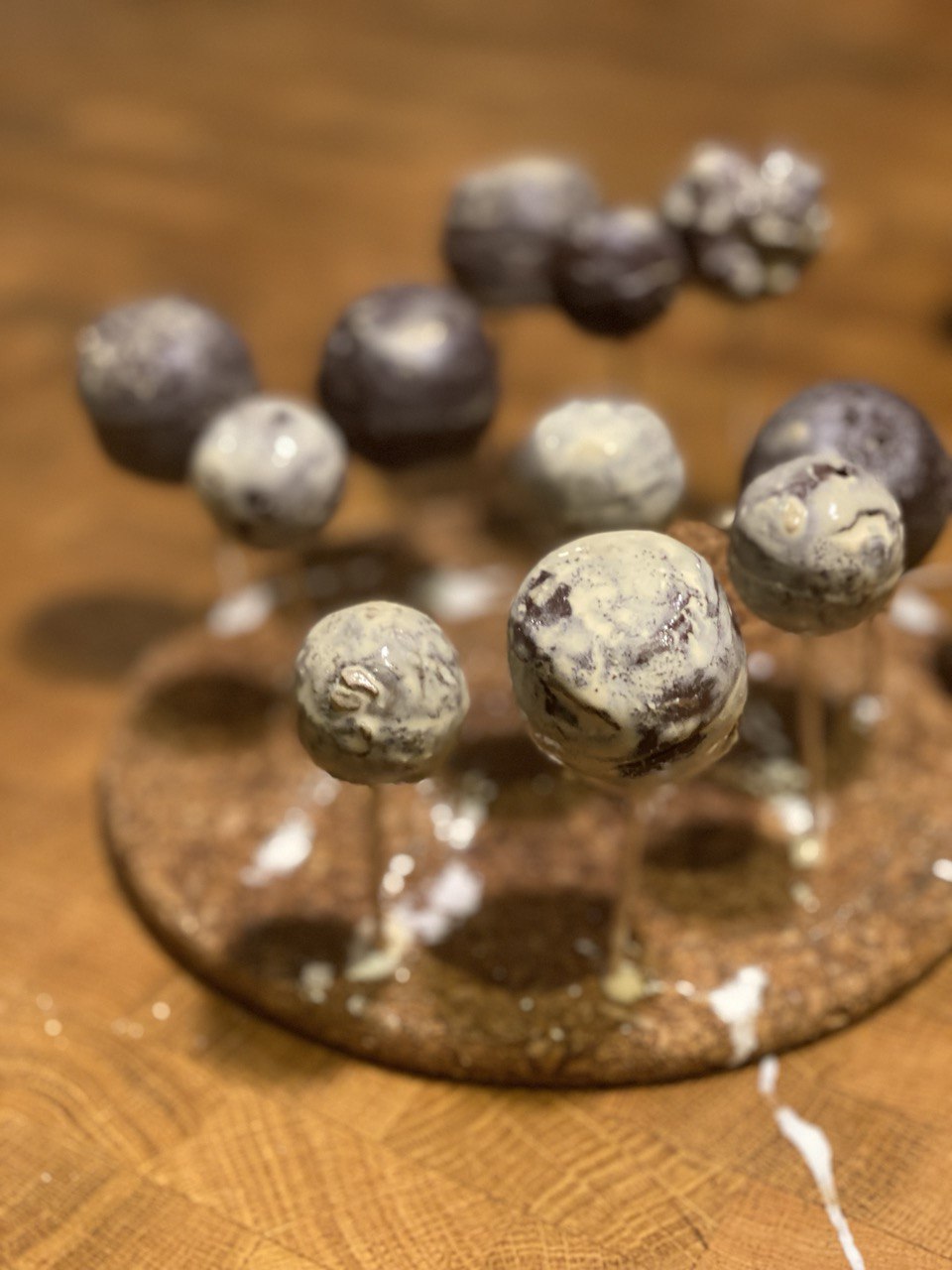
Obviously once you start making truffles, it is hard to stop, so I made some more with white chocolate and Stilton cheese:
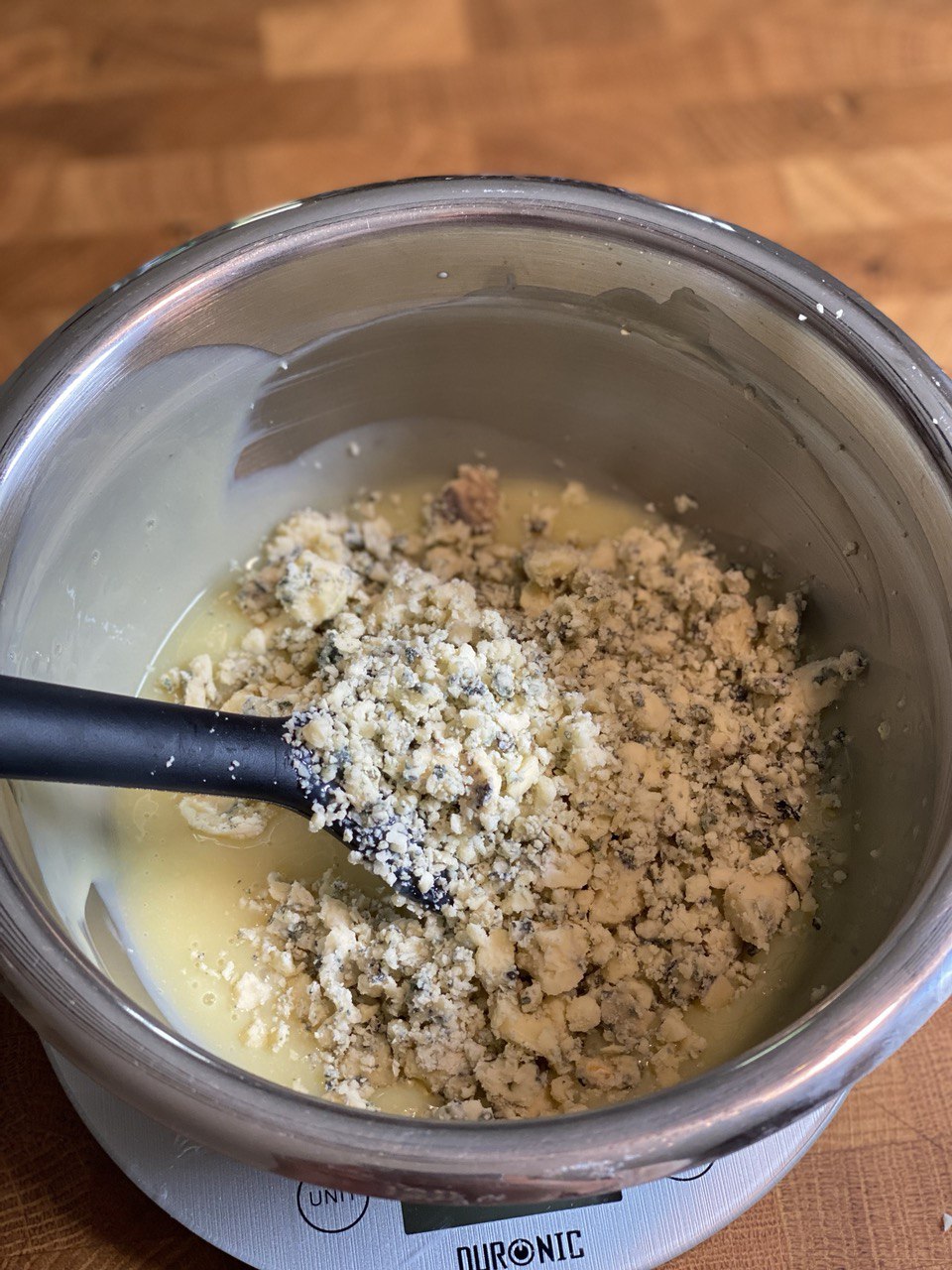
These ones were frozen in moulds:
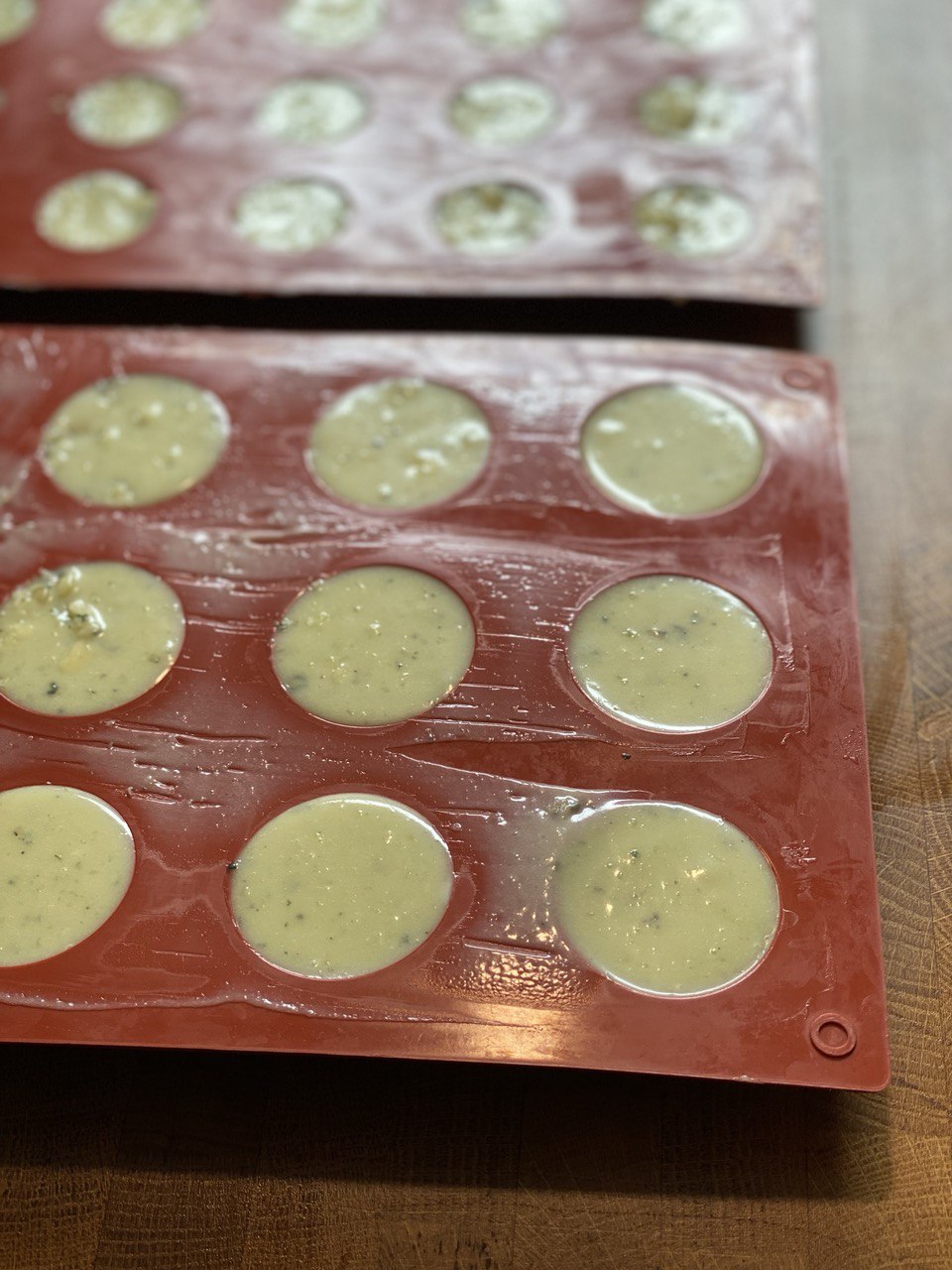
And then garnished with some pink peppercorns:
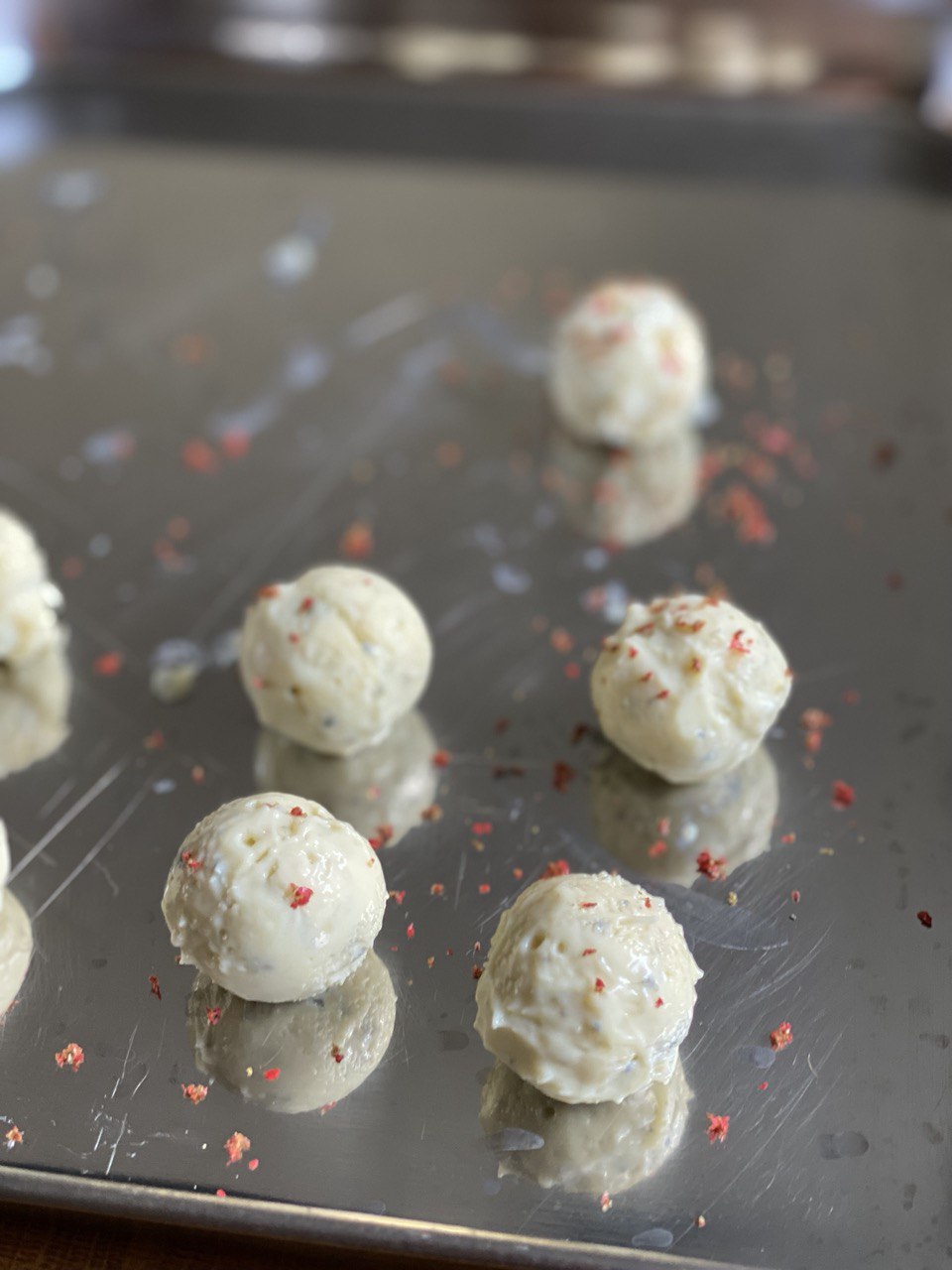
I have some clay left, so probably next time it could be used in a cocktail or something.
Things I enjoyed reading ¶
1. Cocktail Culture Has a Nostalgia Problem by Scott Hocker ¶
Here is something I am guilty of, and yet don't regret at all.
Despite cycling through fresh approaches to cocktail aesthetics—the science-lab precision of “molecular mixology,” the craft dive, the revamped ’70s rec room bar, the tiki revival—the bar world has an intractable fixation on the trappings of the so-called Golden Age of Cocktails, those precious few decades from the mid-1800s until Prohibition. We have an exceptionally long memory, it seems, for a very short period in drinking history. The record is scratched, people, and the tune is on a ceaseless loop.
To me, the world of cocktails should be locked in some pre-Prohibition era, and even though we might recreate drinks with new techniques and ingredients, the modern world doesn't have neither space nor atmosphere for hand-made ice, stirred vermouths, and quite jazz in the background, like it doesn't tolerate cigar lounges and 3-piece suits anymore.
This is a not a nostalgia problem, this is literally the only enjoyable way forward.
People don't come to cocktail bars to observe science, they want to feel the magic instead.
Keep this ceaseless loop going.
2. Hundreds of Ways to Get S#!+ Done—and We Still Don’t by @pomeranian99 ¶
Over the years I tried lots of tools to keep tracks of tasks, from post-its on a table to obscure systems to mobile apps to mind tricks, and yet nothing works in the sense that I still have tasks I postpone day after day.
Zeigarnik found a quirk of the human mind: When a task is unfinished, we can’t seem to stop thinking about it. We perseverate. Psychologists still argue about why; possibly it’s a kind of constant refresh to keep whatever’s pending from vanishing from our short-term memory, like putting something by the front door at night so you don’t forget to take it with you the next morning.
And yet I do feel the Zeigarnik effect very well, and it bothers me a lot. The article doesn't actually help to fix it, but shares some ideas on why we love the ToDo apps so much even if they don't really help.
3. Bursting the bubble: how gum lost its cool by Will Coldwell ¶
Even though the last year might be not a good data point, I am not really surprised to see less and less people around with chewing gums, maybe because I was never a big fan of those.
Cultural representations of gum grew less prominent too: the trashy, uncynical pop culture of the 1990s, embodied by rebellious chewers, gave way to a trend for healthy eating and organic foods. In an age when veganism was on the rise and sustainability became a selling point, gum seemed anachronistic and retro. Chewing on plastic, or popping it all over your face, simply doesn’t appeal to youngsters who scrutinise product labels for artificial ingredients. It used to be cool not to care. Now the opposite is true.
Funny that the author implies the modern generation cares about nutrition labels, which either makes me too old or too odd.
4. How I store my files and why you should not rely on fancy tools for backup by unixsheikh ¶
Backups are rarely a topic for a conversation, and given they're such a default process to have everyone keeps ignoring them until it is too late.
If someone asks me about upgrading to a beta iOS version, I start my reply with an advise to make a backup first.
Every time I switch to a beta version myself, I don't do a backup thinking that the chances everything goes wrong are very low.
Don't be like me, be more like them:
The next time I need to do a full backup I use a second set of drives and perform the same routine. The old set of drives then get swapped out with the first set. This is to avoid having a single moment in time where there isn't an external offsite backup in existence.
In the meantime, I probably should schedule a backup in my to-do list.
5. The weird world of Australian sea snakes by John Pickrell ¶
I have a few tattos, and one of them has a snake in it, thanks to my encounter of sea snakes. Luckily Indian sea snakes are very different from Australian one (i.e they don't try to kill you straight away). On the other hand, the latter seem to be quite unusual even for marine biologists (and these folks seen a lot):
While true sea snakes have almost entirely severed their connection with land, they still need to drink fresh water: work by Harvey in Florida has attempted to probe the conundrum of how they do this. The old dogma was that sea snakes subsisted solely on sea water. However, while they excrete salt, it’s not enough that they can survive on salt water alone. “Contrary to previous thought, they…require fresh water,” Harvey says. “Sea snakes [also] cannot make a water profit solely from eating their prey.”
Not sure if it makes me less afraid of visiting Australia (nope).
6. Typos, tricks and misprints by @arikaokrent ¶
An insughtful look into how English developed over centuries, and why some words are very different from their roots or counterparts in similar languages.
The answer to the weirdness of English has to do with the timing of technology. The rise of printing caught English at a moment when the norms linking spoken and written language were up for grabs, and so could be hijacked by diverse forces and imperatives that didn’t coordinate with each other, or cohere, or even have any distinct goals at all. If the printing press has arrived earlier in the life of English, or later, after some of the upheaval had settled, things might have ended up differently.
Apparently putting something on paper made it less flexible to changes and locked in time, which makes total sense now that it is mentioned (and was really hard to guess on its own).
7. From stolen laptop to inside the company network by @DolosGroup ¶
A scenario many companies afraid of is someone gaining physical access to a protected device, whether it is a laptop or a phone. I thought that once a laptop is locked and encrypted, there is not much one can do to access the intranet, but actually there is a plenty of options.
The “pins” are actually only 0.25mm wide and spaced 0.5mm apart. And those “pins” aren’t actually pins, they are flat against the wall of the chip so it’s physically impossible to attach any sort of clip. You could solder “fly leads” to the solder pads but that’s a hassle and tends to be a very physically unstable connection. Alternatively a common tactic is to locate in-series resistors to solder to, but they were just as small, and even more fragile. This was not going to be easy.
The authors actually make it look really easy and prove that such access could be gained even without soldering of the motherboard. Probably next time I will opt out of traveling with a work laptop (although mine is not Windows-based).
8. Restaurant prices in the 19th century by janwhitaker ¶
A great throwback into prices of the 19th and 20th centuries, almost year by year. The prices themselves are actually not as interesting as the meals people had based on their status and occupation.
1926 Business Men’s Lunch at the Boston Oyster House is 80 cents and consists of soup, a main dish such as Stuffed Pork Tenderloin or Corned Beef and Cabbage, potatoes, and pie.
Really curious what's today's business men's view on corned beef for lunch. Anyone?
9. Why printers add secret tracking dots by Chris Baraniuk ¶
I think I mentioned it before as a thing I learnt: many printers add dots to paper to allow tracing back the origins and even timestamps. However, despite being more widespread years back, it is still a case nowadays, and the reasoning is quite interesting.
And today, anyone can try using microtext to protect their property – some companies, such as Alpha Dot in the UK, sell little vials of permanent adhesive full of pin-head sized dots, which are covered in microscopic text containing a unique serial number. If the police recover a stolen item, the number can in theory be used to match it with its owner.
Good to know that I can go ahead and mark all my socks with it. And then sue the washing machine.
10. Scanning your iPhone for Pegasus, NSO Group's malware by @arkadiyt ¶
First plenty of news were screaming about iPhones being hacked with malware.
Then lots of bloggers shared their favourite ten ways of telling if your phone is hacked.
Most of these approaches were either oddly specific, or hard to reproduce without a jailbreak, or just plainly wrong.
Here is a relatively simple process you can repeat in mere minutes if you are curious whether some country's secret service is spying on you.
So if you have a jailbroken device you will get more complete Pegasus detection with the filesystem dump approach, but since my device is not jailbroken I’ll go with the device backup approach - it’s better than nothing. In fact there is no publicly known jailbreak available for my iPhone model and version of iOS, so I don’t have a choice.
Sadly, no one is writing what to do if they actually do that. Maybe that will come next.
Things I didn't know last Tuesday ¶
1. Mappazzone ¶
A new Italian word I've learnt recently, used by a MasterChef judge to describe someone's plating:
It's a familiar/slang/colloquial term that defines a dish without elegance... It doesn't really say a lot about the quality and taste of the food, but more on how it's presented.
Here in the UK they'd say that "it looks like a dog's breakfast". An important note is that it never addresses the taste, only the way something looks like. So it still might be very tasty despite looking like a total mishmash.
2. Nata de coco ¶
An unexpected way to turn something into a jelly:
A chewy, translucent, jelly-like food produced by the fermentation of coconut water, which gels through the production of microbial cellulose by Komagataeibacter xylinus.
Looks rather fancy actually, would definitely try it:
3. Watling Street ¶
How about a 400+ km long street in England?

A historic route in England that crosses the River Thames at London and which was used in Classical Antiquity, Late Antiquity, and throughout the Middle Ages. It was used by the ancient Britons and paved as one of the main Roman roads in Britannia – Roman-governed Great Britain during the Roman Empire.
I am surprised it is not used as a local replacement for Camino de Santiago, but for Roman Empire fans.
Sounds like a missed opportunity.
4. Blue Lake in New Zealand ¶
Sometimes toponyms might be very misleading and rarely match expectations, but this lake in New Zealand does quite the opposite and overdelivers:
According to the NIWA research results, visibility in the lake is up to 80 metres - meaning the water is considered almost as "optically clear" as distilled water.

The pictures don't do it justice either, so people probably can't even tell that this is the clearest lake in the world until they visit it in person.
5. Primer ¶
One of a few examples where American English actually managed to preserve the original pronounciation of a word, while it was gradually changed in British English.
The word for the elementary textbook was pronounced with a short “i” (rhyming with “trimmer”) when it first showed up in English in the 14th century.
Americans still pronounce it that way. But in the late 19th century, the British began pronouncing it with a long “i” to rhyme with “timer” and that’s now the usual pronunciation in the UK, according to the Oxford English Dictionary.
I also like how lots of these articles tend to explain pronounciation via rhyming words. Is it common in other languages too? Was it as common in English primers a few decades ago?
6. Orchestral soundtracks in 65 tube stations ¶
Probably everyone read about classical music being very good for plants, but here in London they went further and found out that it also reduces crime in the Tube.
The inspiration for the Burger King plan, a CMCBD official commented, came from the London Underground. In 2005, the metro system started playing orchestral soundtracks in 65 tube stations as part of a scheme to deter “anti-social” behavior, after the surprising success of a 2003 pilot program. The pilot’s remarkable results — seeing train robberies fall 33 percent, verbal assaults on staff drop 25 percent, and vandalism decrease 37 percent after just 18 months of classical music — caught the eye of the global law-enforcement community.
I should suggest colleagues to play some Bach at the next retrospective session, and then see if something changes.
7. Mozart statue in London ¶
Usually I read about famous spots and then probably visit them, but here we randomly walked past a farmers' market, and then on our way back spotted a Mozart statue just to learn that he used to live across the street.
The house where the Mozarts lived is near Orange Square at 180 Ebury Street and is marked with a plaque. It is also where Wolfgang in London wrote his first symphony, at the age of eight.
The market is quite good too.
8. Eating Corpses as Medicine ¶
Ever wondered why there are not so many mummies left?
“The question was not, ‘Should you eat human flesh?’ but, ‘What sort of flesh should you eat?’ ” says Sugg. The answer, at first, was Egyptian mummy, which was crumbled into tinctures to stanch internal bleeding. But other parts of the body soon followed. Skull was one common ingredient, taken in powdered form to cure head ailments. Thomas Willis, a 17th-century pioneer of brain science, brewed a drink for apoplexy, or bleeding, that mingled powdered human skull and chocolate.
Given that there are people out there who still prefer powdered deer ants to modern pills, I am not even that surprised.
9. Crinkle crankle wall ¶
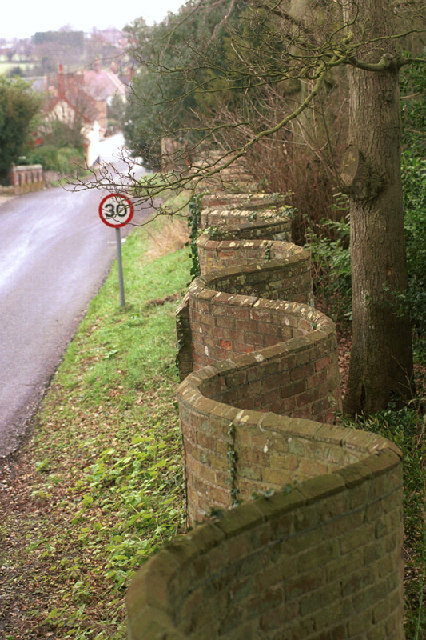
That wall pops up in social media under claims that it is using less bricks than a normal straight fence, which is obviously a lie.
However, it has its own reasons to be so... wavy:
A crinkle crankle wall, also known as a crinkum crankum, sinusoidal, serpentine, ribbon or wavy wall, is an unusual type of structural or garden wall built in a serpentine shape with alternating curves, originally used in Ancient Egypt, but also typically found in the United Kingdom.
At least it doesn't break the rules of geometry by being cheaper to build.
10. Pedestrianism ¶
That sounds like a teriibly incurable disease but is just an old sport.
The rules were simple – essentially, contestants were required to walk in circles for six days in a row, until they had completed laps equivalent to at least 450 miles (724km). They could run, amble, stagger or crawl, but they must not leave the oval-shaped sawdust track until the race was over. Instead they ate, drank and napped (and presumably, performed other bodily functions) in little tents at the side, some of which were elaborately furnished.
I could easily win if there were a similar thing but with contestants required to lie in bed for six days in a row until they scroll through at least 450 feeds with memes.
Book of the week ¶
Among many food-related genres there is one most underestimated in my eyes: the food memoirs.
Sometimes it is about remembering menus, sometimes about stories of restaurants or chefs, sometimes about experiences one wishes to revive.
Martin Benn's Sepia blends all of this together:
After twelve months, Tets announced that David would be leaving. There was a special VIP lunch coming up that Tets was attending, and he asked if I would write the menu—a degustation of my own that was typical of his style and cuisine. I relished the opportunity and set about creating eight courses.
After the lunch, Tets came bounding through the door to tell me it felt as though he had cooked it himself. ‘It was amazing,’ he said. The next day he arranged a meeting with me in his office.
‘Martin, you love to cook don’t you?’
‘Yes of course.’
‘I can see it. You cook with your mind and your heart. I can see that cooking is your life, I want you to become head chef for my restaurant, what do you think?’
The books is actually built around four menus, but tells way more about the author himself, and people he used to work with, and that is the best part.
Also I appreciate the recipes being very classy but relatively easy to replicate (as in, no hard-to-find equipment or ingredients is required).
This is quite rare in the world of chefs who tend to dip everything into liquid nitrogen and then distil in a rotovap just to dust a plate before serving.
Thank you and see you in a week! ¶
If you have any questions, or want to suggest a link for the next newsletter, please drop me a message on Twitter or reply to this email.
Cheers! 🍸